Stralsund’s rich history as a thriving Hanseatic city can be seen in many places in the beautiful Old North German town, where merchant buildings are located in the streets between the three large churches and other public buildings erected as symbols of the city’s ability and wealth during the Middle Ages.
The many small streets are evocative as of a bygone era, and one quickly discovers why the city center is on UNESCO’s list of world heritage sites. As you approach Stralsund, you immediately see the city’s great medieval churches; St. Nikolai, St. Marien and St. Nikolai. They are all sights and worth a visit, and in the streets around them it is just about exploring.
The town squares are nice too. Best known is the Alter Markt, where you will also find Stralsund’s most famous building; Rathaus. The town hall stands almost as a manifestation of the city’s historical wealth.
There is water all around the town of Stralsund, and the wetlands are spread on the strait towards the Baltic Sea and the remains of the city’s old fortifications. The waterfront areas are very vibrant places where there are often larger events. You can also get closer to the maritime by visiting one of the prestigious museums in the form of the Deutsches Meeresmuseum and the modern aquarium Ozeaneum.
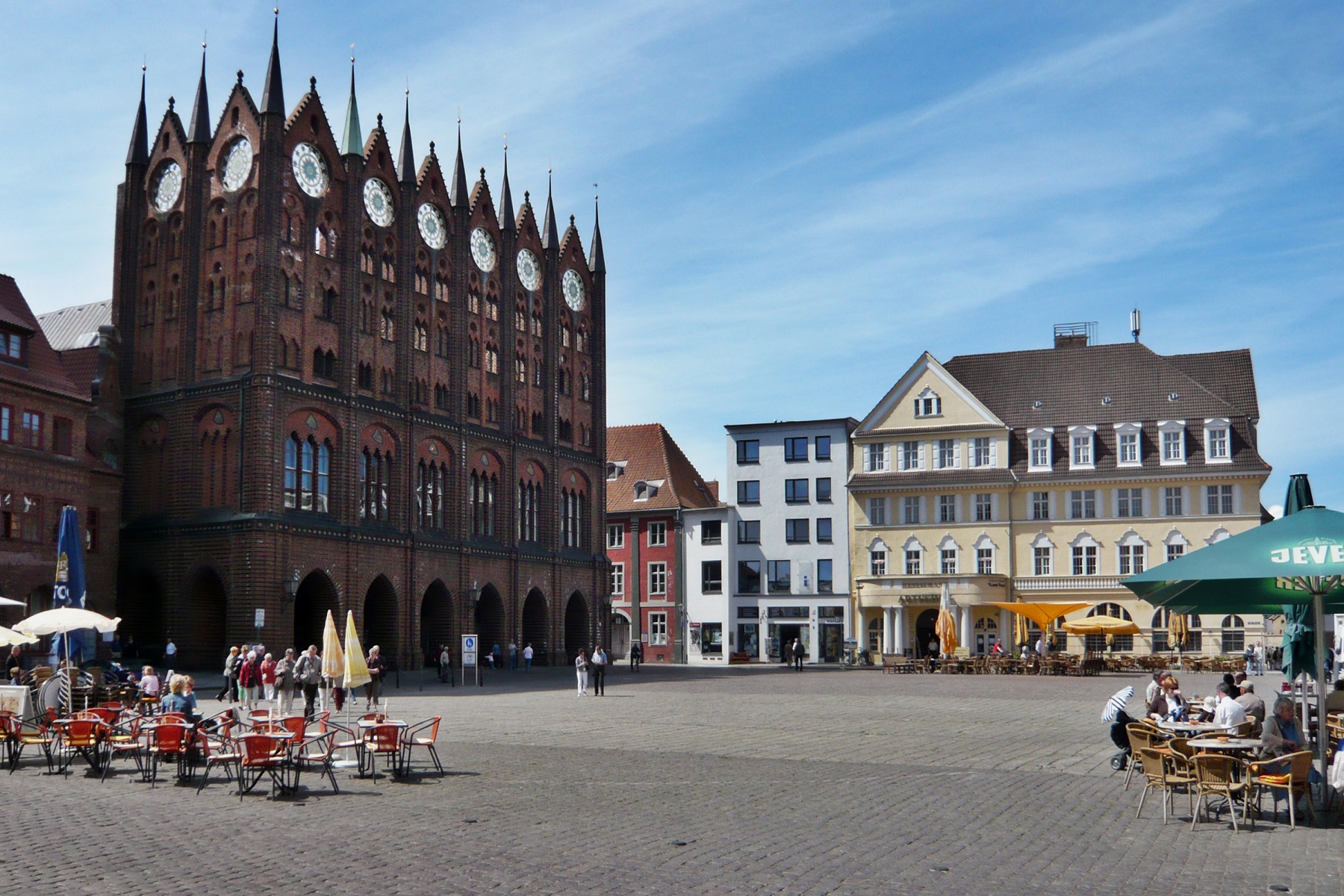
Rathaus is Stralsund’s town hall building, which was built in typical North German brick Gothic with countless fine details in both the interior and exterior decoration. Construction began around 1250, relatively few years after Stralsund had obtained market town rights.
Towards the year 1400, the town hall was expanded with the high facade facing the Alte Markt. On the facade you can see the coats of arms of the cities of Greifswald, Hamburg, Lübeck, Rostock, Wismar and of course Stralsund. They were put up to emphasize the affiliation to the Hanseatic League.
A fire destroyed large parts of the town hall in 1680, some were rebuilt, and new buildings were also added. At the end of the 17th century, the inner courtyard, Innenhof, was established in the beautiful version that can be seen today. Inside the building there are several beautiful details and halls such as the Löwensche Saal. The Swedish Gate, Schwedenportal, is also worth seeing.
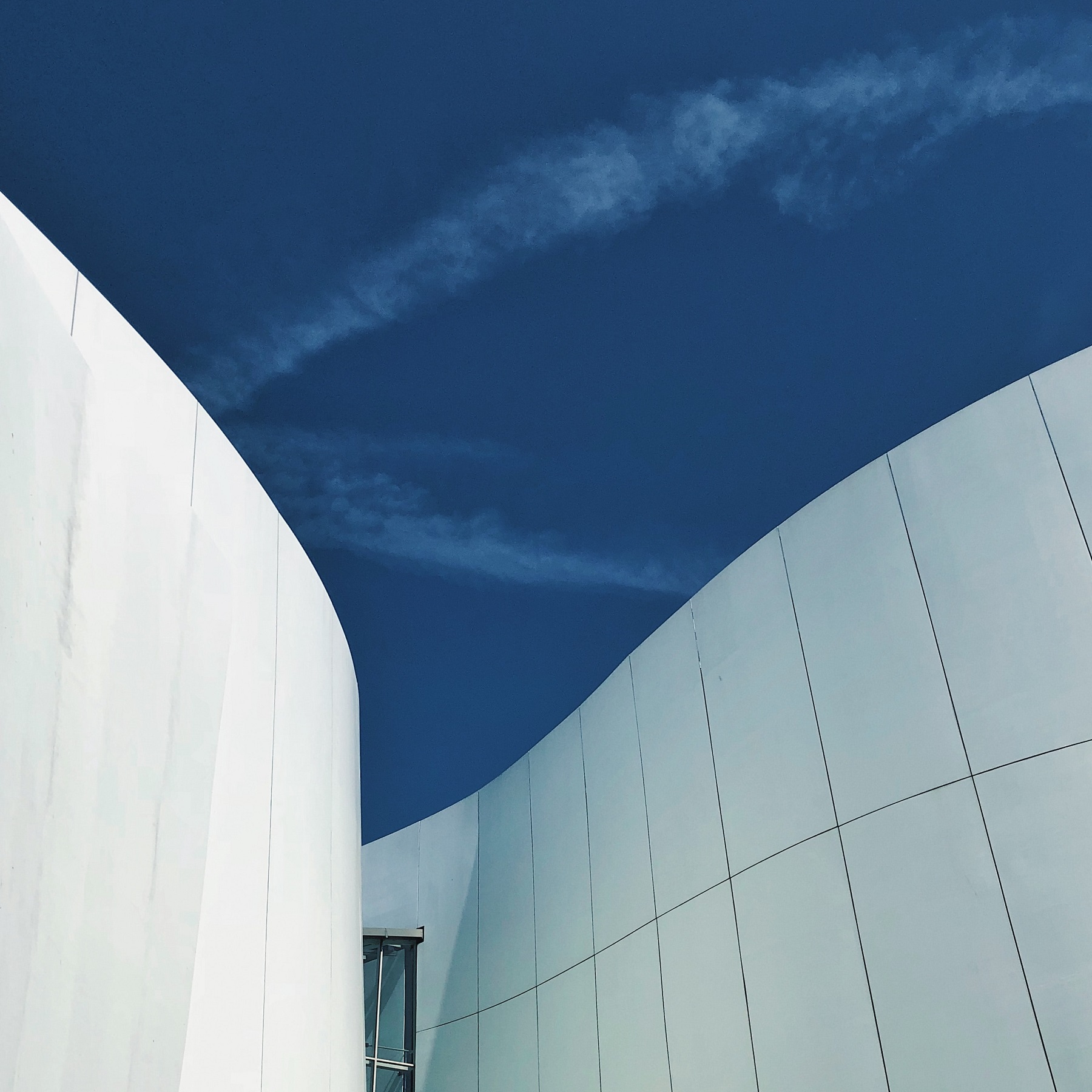
Ozeaneum opened July 2008 as one of Germany’s largest aquariums with maritime animals from the Baltic Sea, North Sea and Atlantic Ocean. Countless aquariums and an aquarium tunnel feature mackerel, herring, cod, sharks and other fish from the waters represented.
Of particular interest are the exhibitions of whale models in life size, which are hung from the ceiling. You can lie on the floor beneath them and let yourself be carried away by a life around the giants of the sea, such as the blue whale.
The Ozeaneum building itself, with its modern architecture, is also worth seeing and enjoying. The individual and rounded buildings in the museum complex are built with the inspiration from stones rolling in the sea.
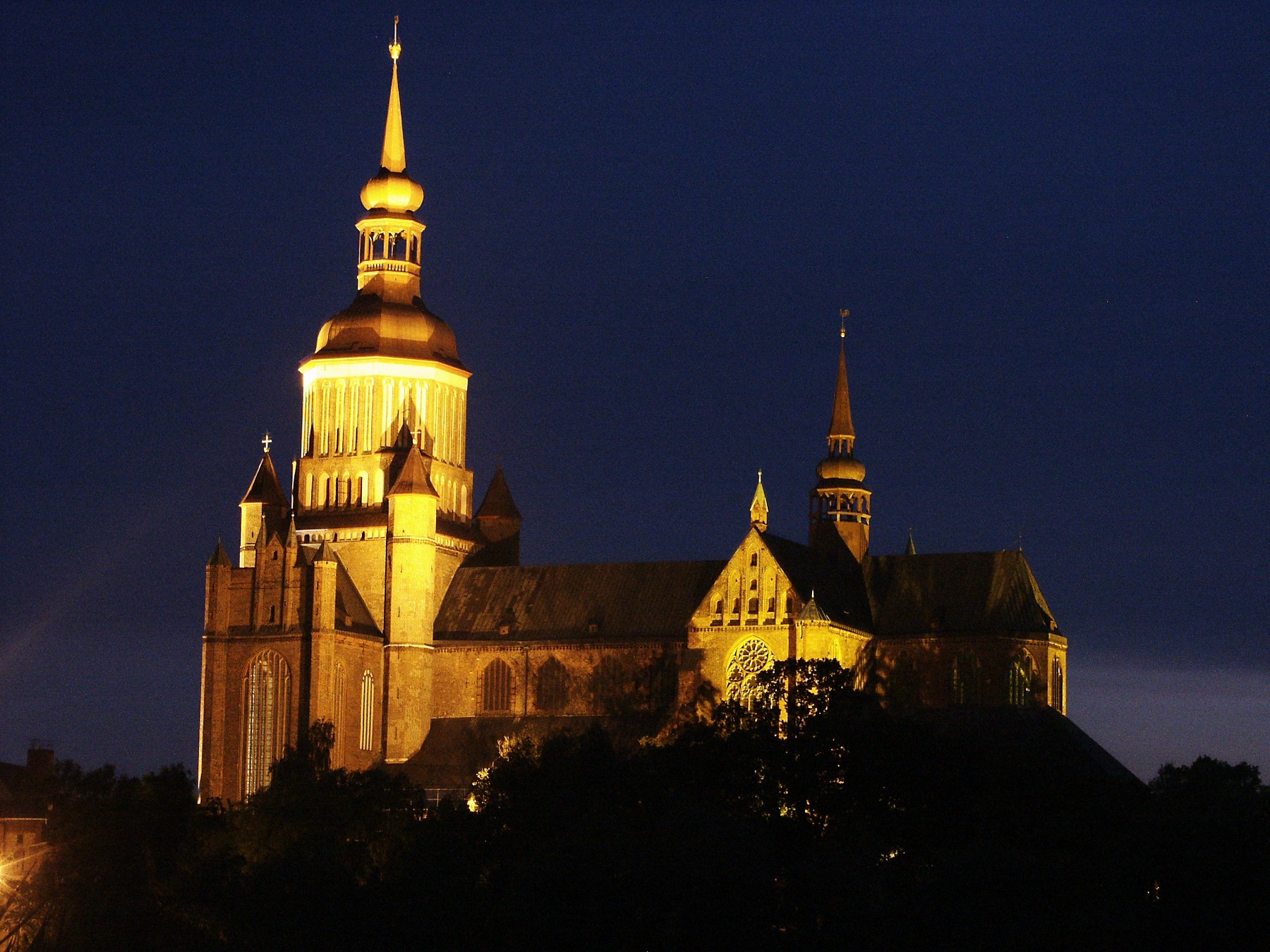
Kirche St. Marien is probably the most striking church profile in Stralsund’s skyline. It was consecrated in 1298 as the largest of the city’s parish churches. However, the church only stood in its original form until 1382, when the tower collapsed together with some of the church building.
It was after that event that the mighty part to the west was erected. At that time, a high spire was added to the tower, reaching a height of 151 meters. After a lightning strike, the current tower was created in 1708. You can climb the 104 meter high tower, and after several hundred steps you are rewarded with a magnificent view of Stralsund.
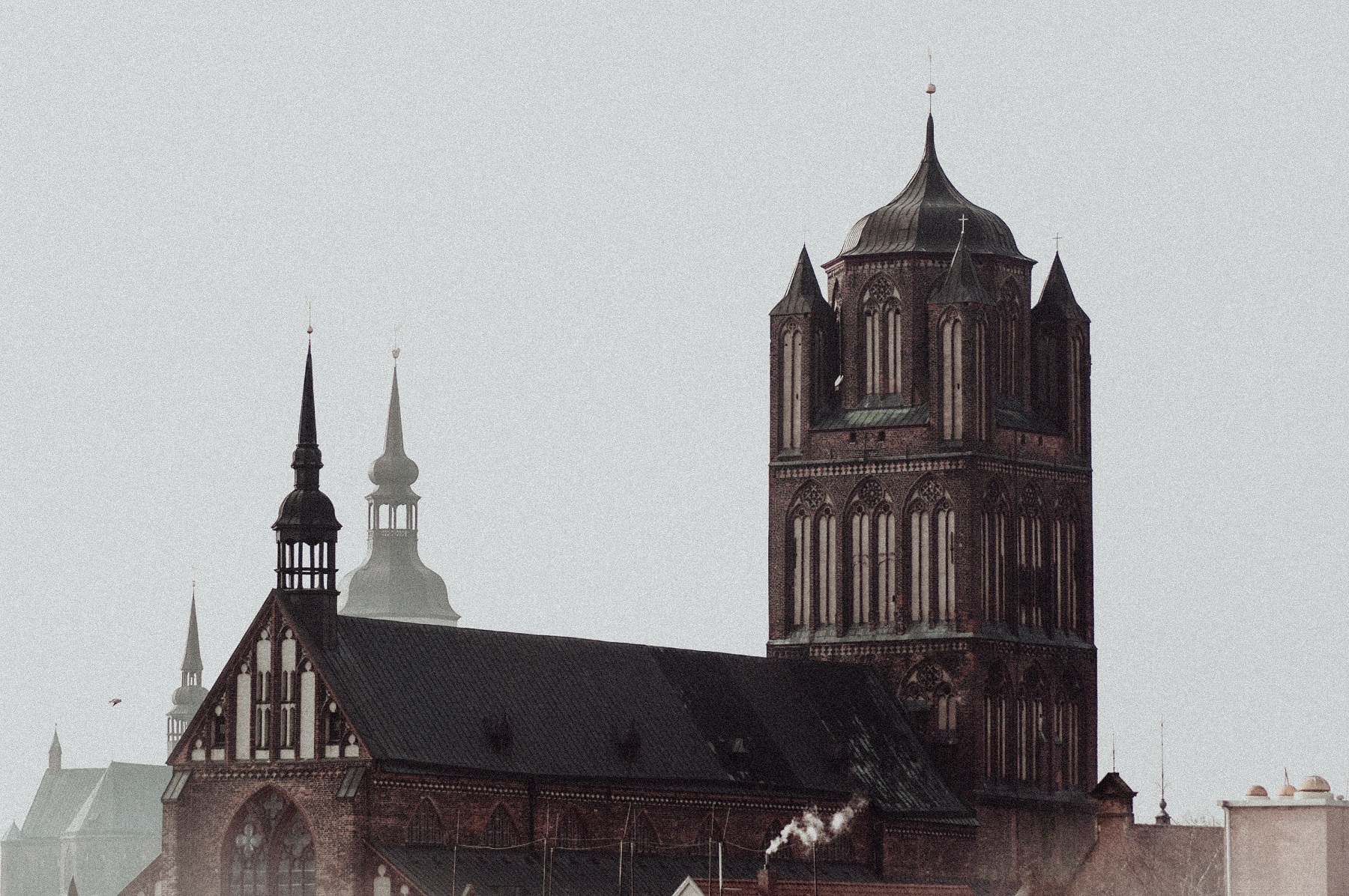
Kirche St. Jakobi is one of Stralsund’s large churches. It was consecrated in 1303 as the third of the centrally located large city churches in Stralsund. During the 14th century, it was extended several times, including the addition of a tower.
The 17th century and the beginning of the 18th century were particularly hard times for the beautiful church. During the Swedish siege in 1628, it was hit by more than 30 hits, and in 1662 the top of the tower caught fire after a lightning strike. In both 1678 and 1715, artillery fire caused damage to the interior.
In the early 19th century, French troops used the large church interior as a horse stable, and in World War II the church was hit during a bomb attack on 6 October 1944. Some works of art could be saved, and in recent years a thorough restoration has been carried out.
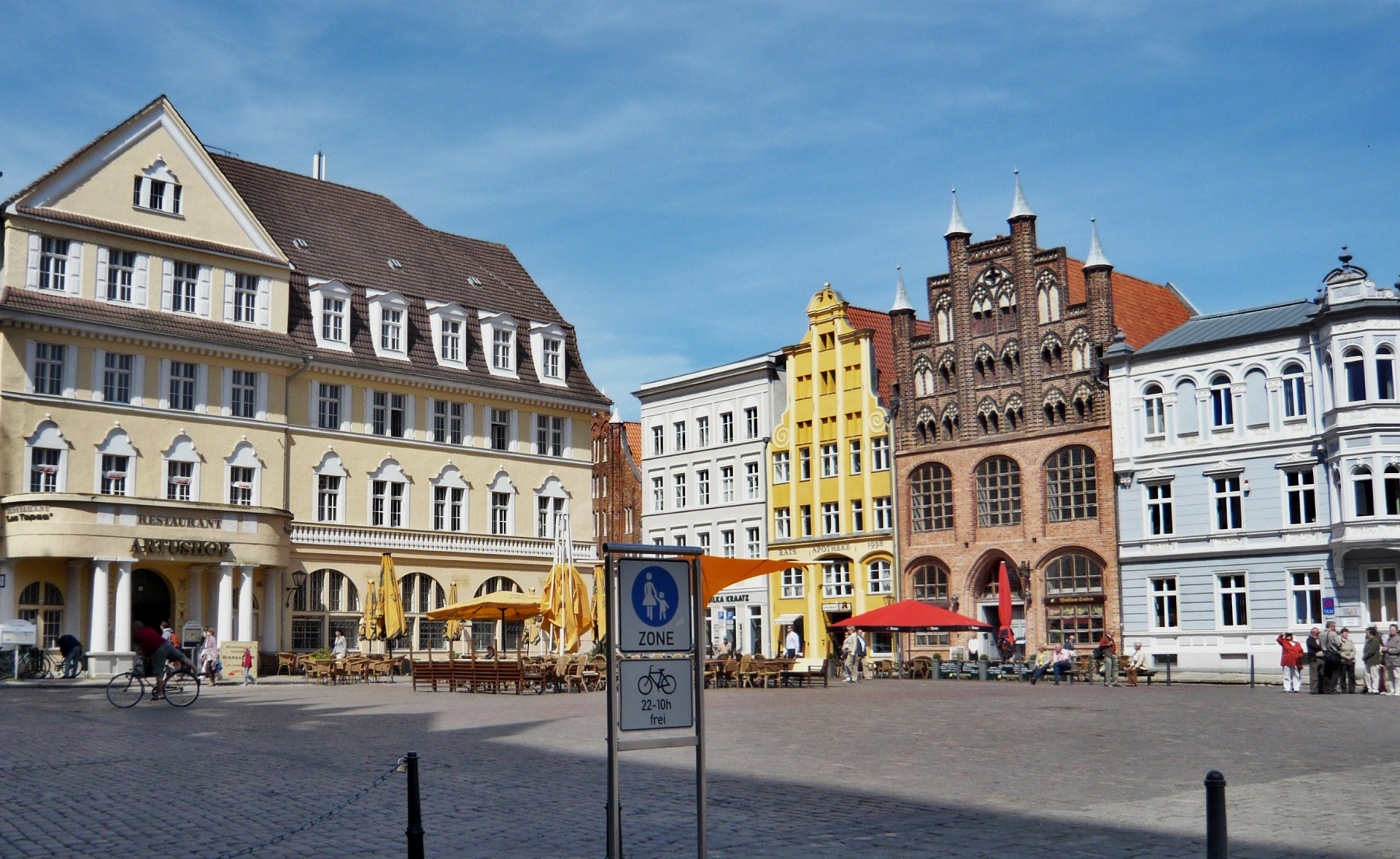
Alter Markt is Stralsund’s old market square, and over the centuries it has been the city’s most important square. The city was governed from here, and the first of the major churches in Stralsund was constructed here. Today there is a nice atmosphere among the magnificent buildings around the square.
You can see the Commandantenhaus building at Alter Markt, which the Swedes built in 1748-1751 for their local commander. The most well-known building, however, is Stralsund’s city hall building, which was constructed from around 1250 in typical North German brick Gothic with countless fine details in both the interior and exterior decoration.
Nikolaikirche is the oldest of Stralsund’s three large, old parish churches. It was inaugurated in 1276 and dedicated to Saint Nicholas, who is the patron saint of sailors. The church’s south tower with the spire measures 103 meters. The Baroque top was added in 1667, since a fire had destroyed the Gothic spiers five years earlier.
The church is 87 meters long, and the height of the nave is 29 meters. These are some impressive dimensions that underline the wealth that shipping brought to Stralsund. The altar of the church is worth seeing, and behind the altar you can see Nicolaus Lilienveld’s astronomical clock, which was built in 1394. In the church you will also find the monumental sculpture, Anna Selbdritt.
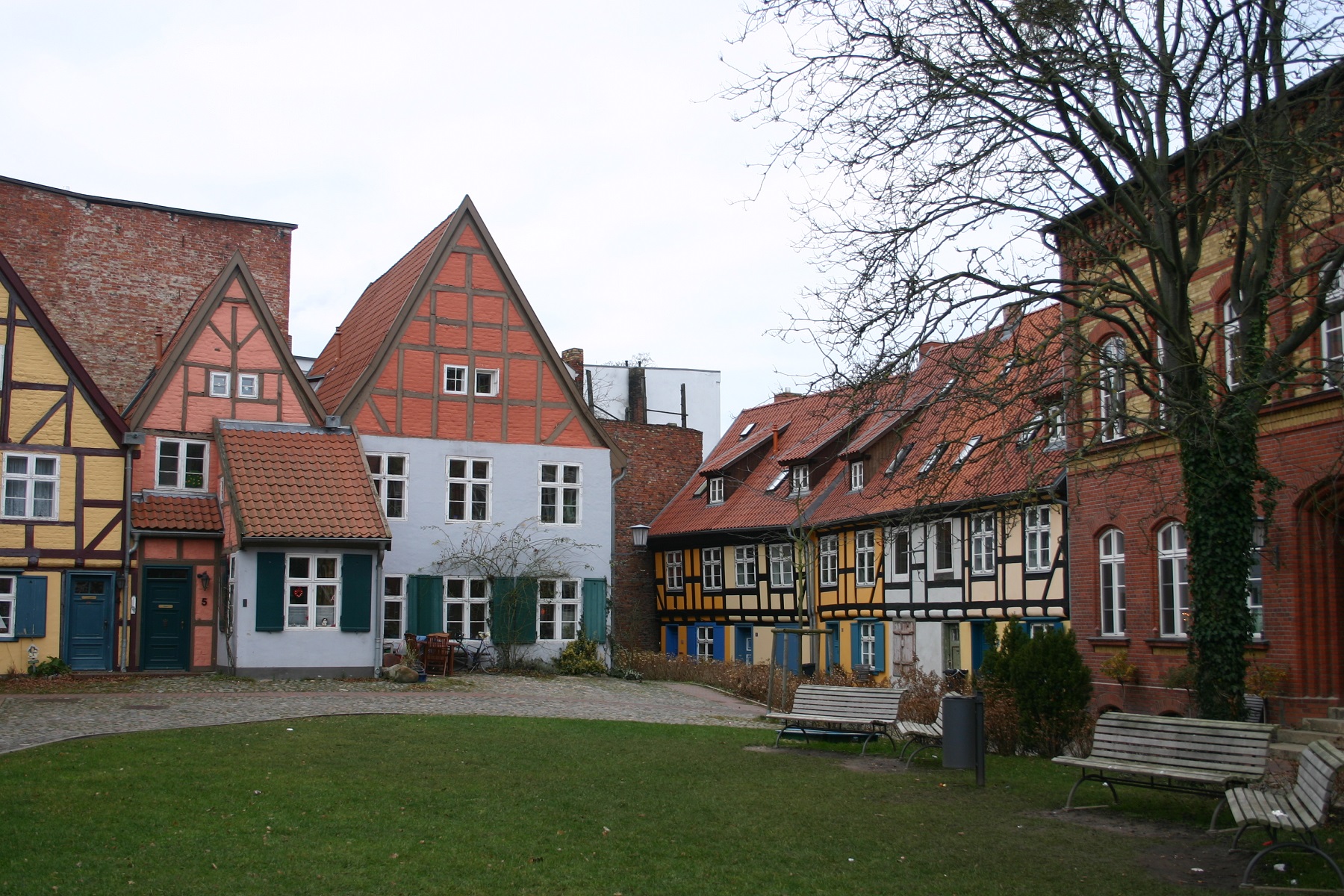
Kloster St. Johannis is a monastery founded in 1254 by the Franciscans. It was one of the largest buildings of this order of monks along the southern Baltic coast, and it is now one of the oldest preserved buildings in Stralsund.
By far the entire complex is from the foundation. On the other hand, it is characterized by several later constructions that stand out in terms of various styles. Gothic, baroque and classicism are the main architecture for the expansion of the monastic facilities through the years.
After the Reformation, when the monastery was closed down, the buildings were used as poorhouses. Today, the place is used as a venue for concerts, and there are several interesting places to see, such as the baroque library. In 1761, the city was given a collection of books by the Swedish Governor-General Axel von Löwen, and it is kept here.
Like many other towns in the Middle Ages, Stralsund was surrounded by a defensive wall. It measured 3,100 meters and consisted from the 14th century of stone walls and towers. When the Swedes arrived in 1648, they expanded the defenses with bastions.
Today, part of the old wall is both preserved and restored, so it gives a fine impression of the fortifications of the time. Two city gates, Kütertor and Kniepertor, have also been preserved from the time when the city gates were the only access points to the city.
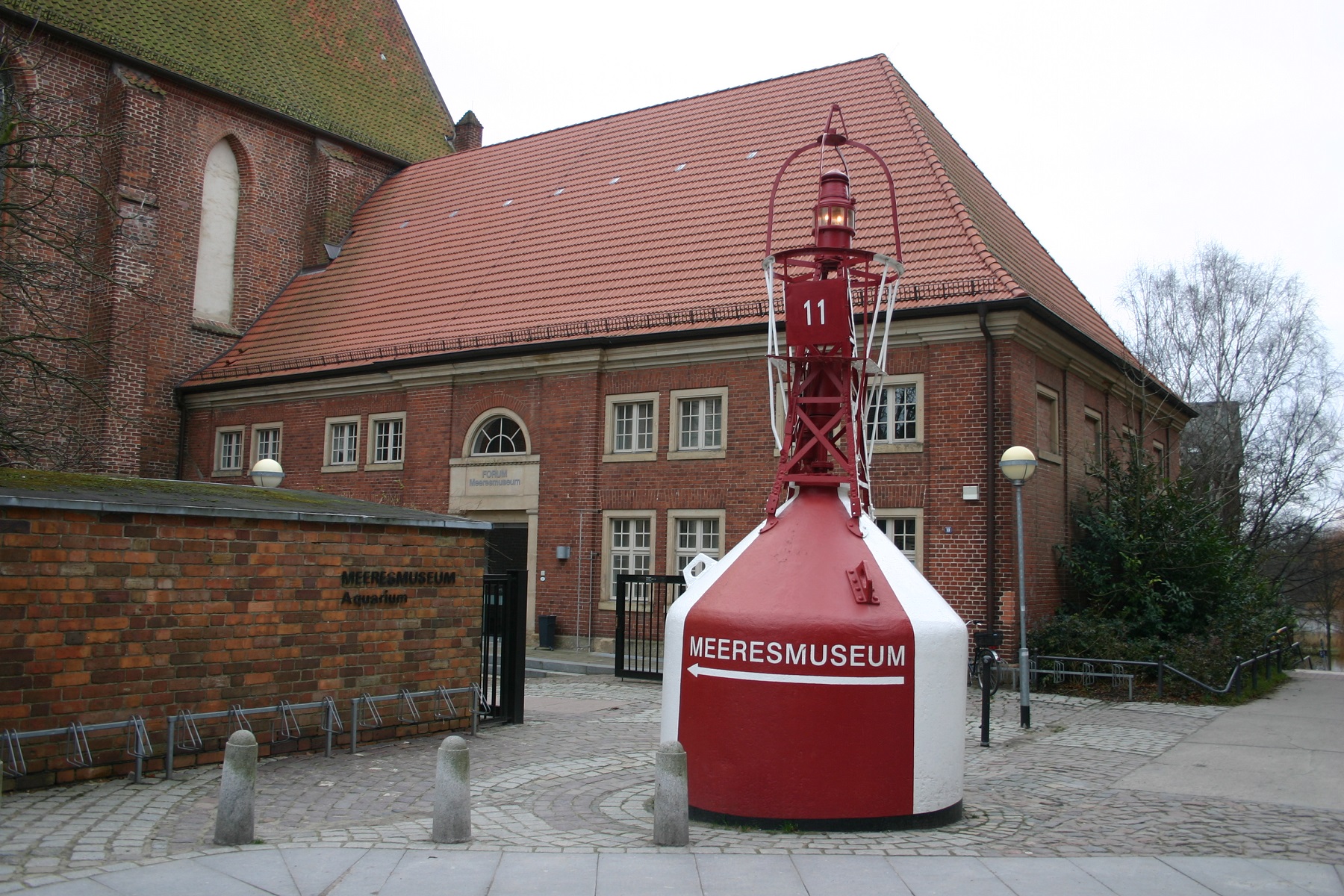
The German Oceanographic Museum is a place where you can explore many aspects of the world’s oceans, e.g. marine biology, research, fishing and environmental and preservation efforts. There is a special exhibition about the animals and plants of the Baltic Sea, and then you can admire the museum’s many aquariums.
German Oceanographic Museum was established in the former monastery of Kloster St. Katharinen in 1951, which was founded by Dominican monks in the 13th century. It is well preserved and stands mainly in the original so-called brick Gothic style.
The former monastery buildings are very beautifully decorated with 15th-century paintings in the Kapitelsaal hall. One of the beautiful buildings is the 70 meter long church. With the Reformation in 1525, the monastery was dissolved and the site taken over by the city government. After the dissolution, the place has been used as a gymnasium and armory to mentioned a few, before it became a museum.
Museumhaus is part of Stralsund’s cultural history museum, which as an institution is called Kulturhistorisches Museum Stralsund. The house dates from the city’s heydays in the 1400s, when buildings were constructed at a fast pace as Stralsund competed with the merchant city of Lübeck.
When you visit the Museumshaus, you enter an experience of the Middle Ages. That era can be explored in the house, which is furnished as an interesting insight and journey into the following centuries of life and development in the city.
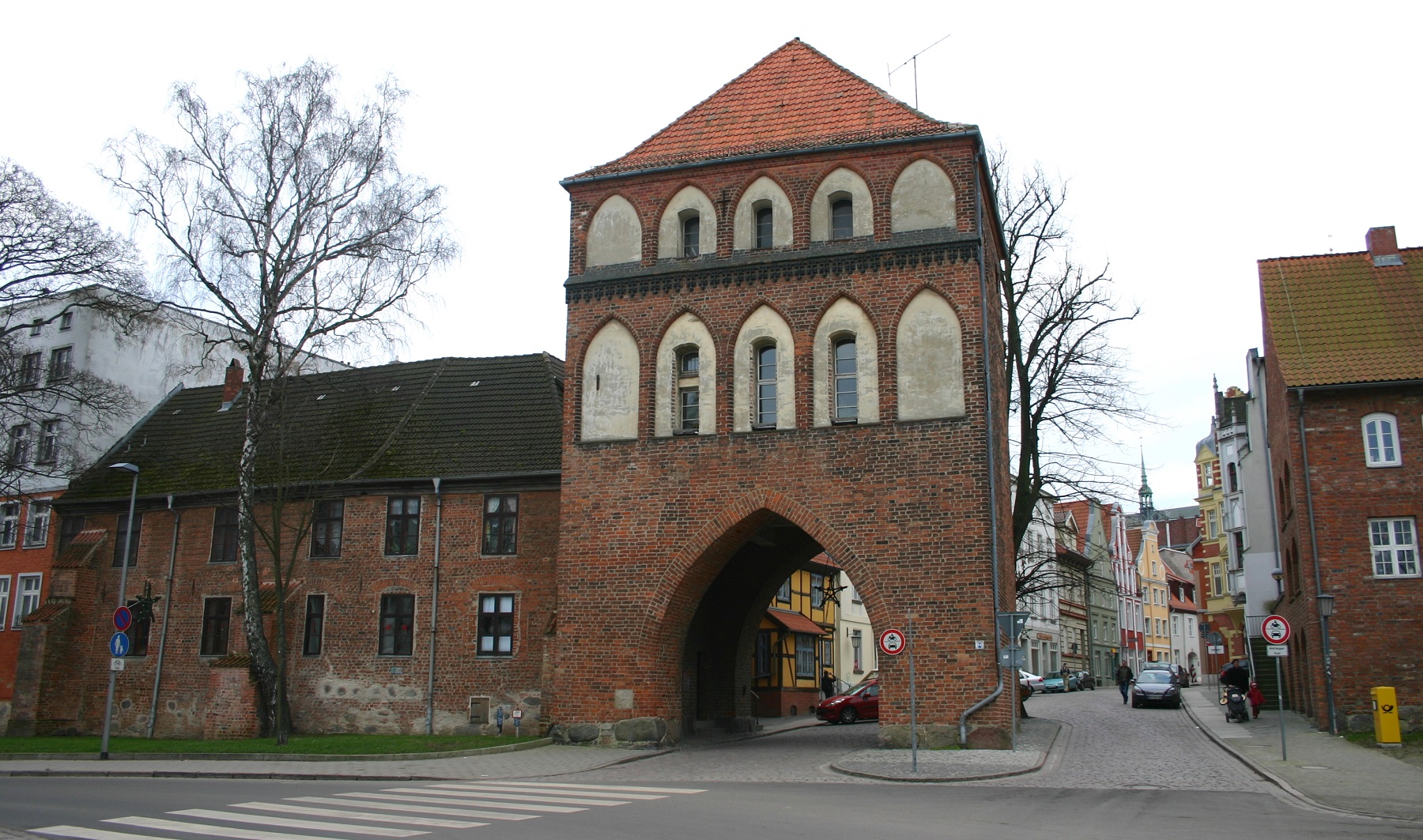
Kniepertor is one of the original ten city gates in Stralsund’s historic fortifications which surrounded the city. The gate was inaugurated in 1293 and named after one of the families in town.
The gate is 20 meters high and 11 meters wide, and until the 1960s a tram line ran through the gate. Various buildings up to the gate were demolished in the latter half of the 19th century to make space for the increasing traffic, but the Kniepertor itself was preserved.
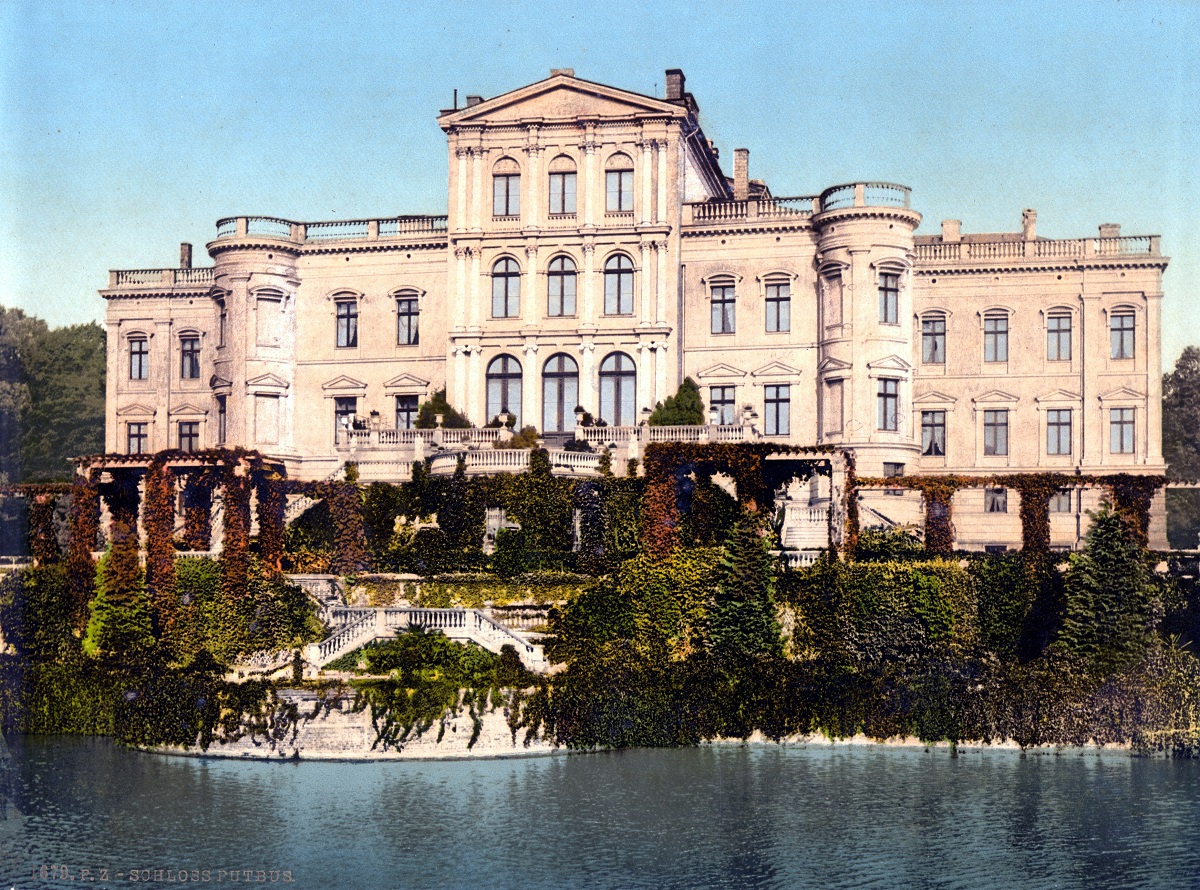
Putbus is one of the newer and very interesting towns on the island of Rügen. It is today architecturally interesting and has the status of being a seaside resort with its fine location in the south-east of Rügen island. It was Prince Wilhelm Malte I who founded Putbus in 1808. He initiated the construction of the town to be a residence and seaside resort with Bad Doberan and Heiligendamm as models.
In the decades that followed, much was built in the city, which took on its own form. Despite only having a few thousand inhabitants, you can find both a castle church, theater, resort hotels and remains of the city castle in Putbus, and things are centered around the city squares, Markt and Circus, which have a circular shape. The predominant architectural style is classicism, which you can clearly see in an ensemble around the Circus, which has an obelisk in the middle.
The first resort hotel was opened by Wilhelm Malte I in 1816, and in the years 1819-1821 the Residence Theater was built. In 1827-1832, Putbus’ castle was rebuilt in classicism, while the castle church was built in the years 1844-1846. The castle church is today called Christ Church/Christus-Kirche and is located in the city’s castle park.
Putbus’ castle was blown up during the GDR era in 1962, and today you can only see the outline of the castle and some facilities from the castle’s terrace. Originally there was a castle here, where Putbus’ noble family already resided in the 14th century. The castle of the 1300s and 1400s was in Gothic style, and this was rebuilt in the 1720s and thus again by Wilhelm Malte I in the 19th century.
The noble family of Putbus owned the castle until 1944, after which it came under the administration and use of the German state. After the end of the Second World War, the castle was continuously looted, and it fell into such disrepair that, for both ideological and economic reasons, it was decided not to be restored. The castle park is south-west of the Circus, and in it you can visit the site’s beautiful orangery.
Binz is the largest and most famous seaside resort on the island of Rügen. Its history started as a fishing town in the 1400s, while already around 1830 it became an excursion town due to its lovely beaches that stretch for kilometers north of the town.
Beach tourism increased in the 1870s, and in the following decade Binz was given the predicate of Seebad or seaside resort. A bathing pier and promenade pier were built, and the elegant seaside architecture characterized the cityscape in the decades around 1900.
Today, Binz stands as a beautiful, cozy and fashionable seaside resort that continues to attract many tourists. In addition to the natural greatness of the city’s beach, there is a lot of admirable architecture here. These include the Kurhaus Binz at the beach promenade from 1908, which is a luxury hotel by the water.
There is a former hunting castle near Binz, the Granitz (Tempelberg), whose construction history began in 1726, when Count Moritz Ulrich I had a lookout tower and the hunting lodge Solitüde built. The current castle was constructed 1838-1846 by Prince Wilhelm Malte I in Northern Italian Renaissance style. The castle stands at the highest point in the region, and from the roof there is a panoramic view of Rügen from a height of 144 metres.
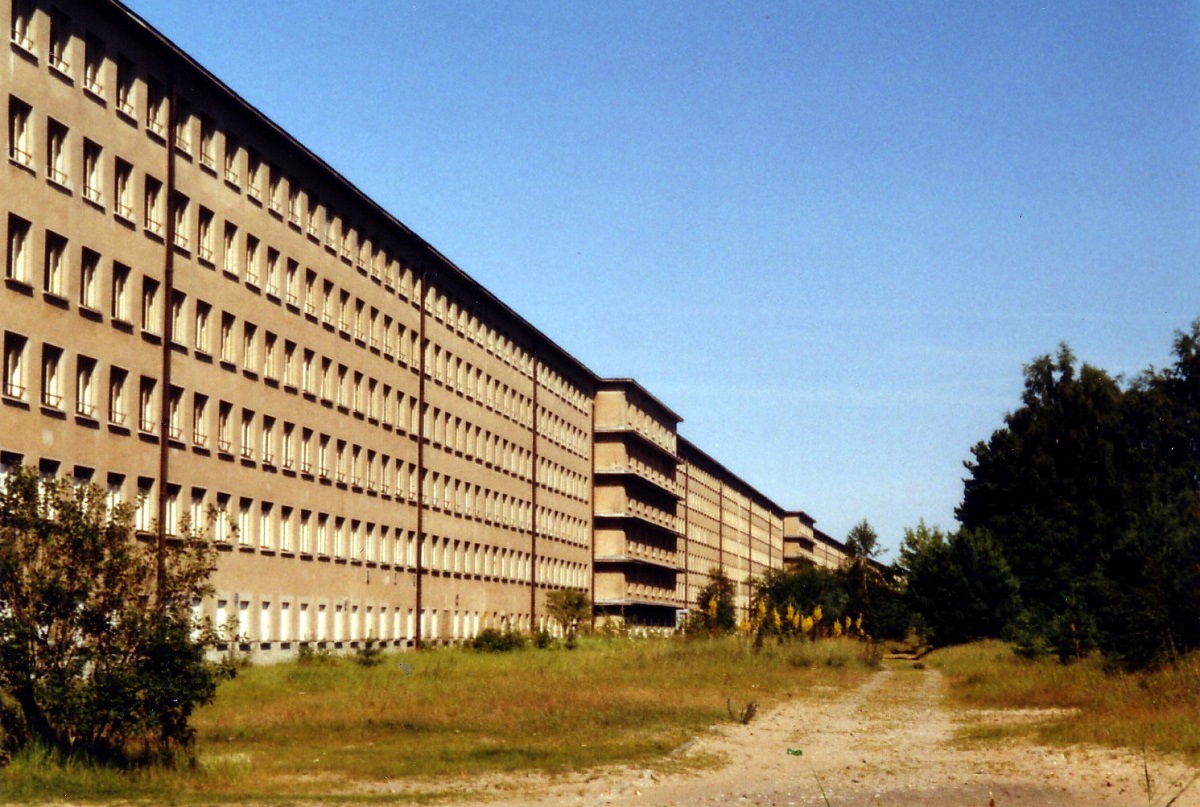
Prora or the colossus in Prora is the popular name for the former KdF-Seebad Rügen, which is among the world’s largest buildings. The colossus was built 1936-1939 and consisted of several connected building parts over several kilometers along the coast.
It was the Nazi organization Kraft durch Freude that built the facility, which was supposed to be able to accommodate 20,000 holidaymakers at a time. However, the holiday complex was not completed before World War II broke out, and thus a cruise pier and a large central activity and event hall were never built.
After the end of World War II, attempts were made to blow up the building, but the construction made it a task that was abandoned. Instead, a barracks was set up in the colossal building. Today, the barracks are no longer there, but you can see museums and also the interior in several parts of the intended hotel.
The Hanseatic city of Greifswald by the river Ryck is a cozy and interesting city with everything that belongs to the epitome of a northern German city. Beautiful buildings, impressive churches, a central market square and a town hall with a history from the Hanseatic period are just some of the highlights.
Compared to other northern German Hanseatic cities, Greifswald is a relatively small town, and this gives the opportunity to experience the city on foot at your leisure. There is not far between the sights, which for many is a great experience.
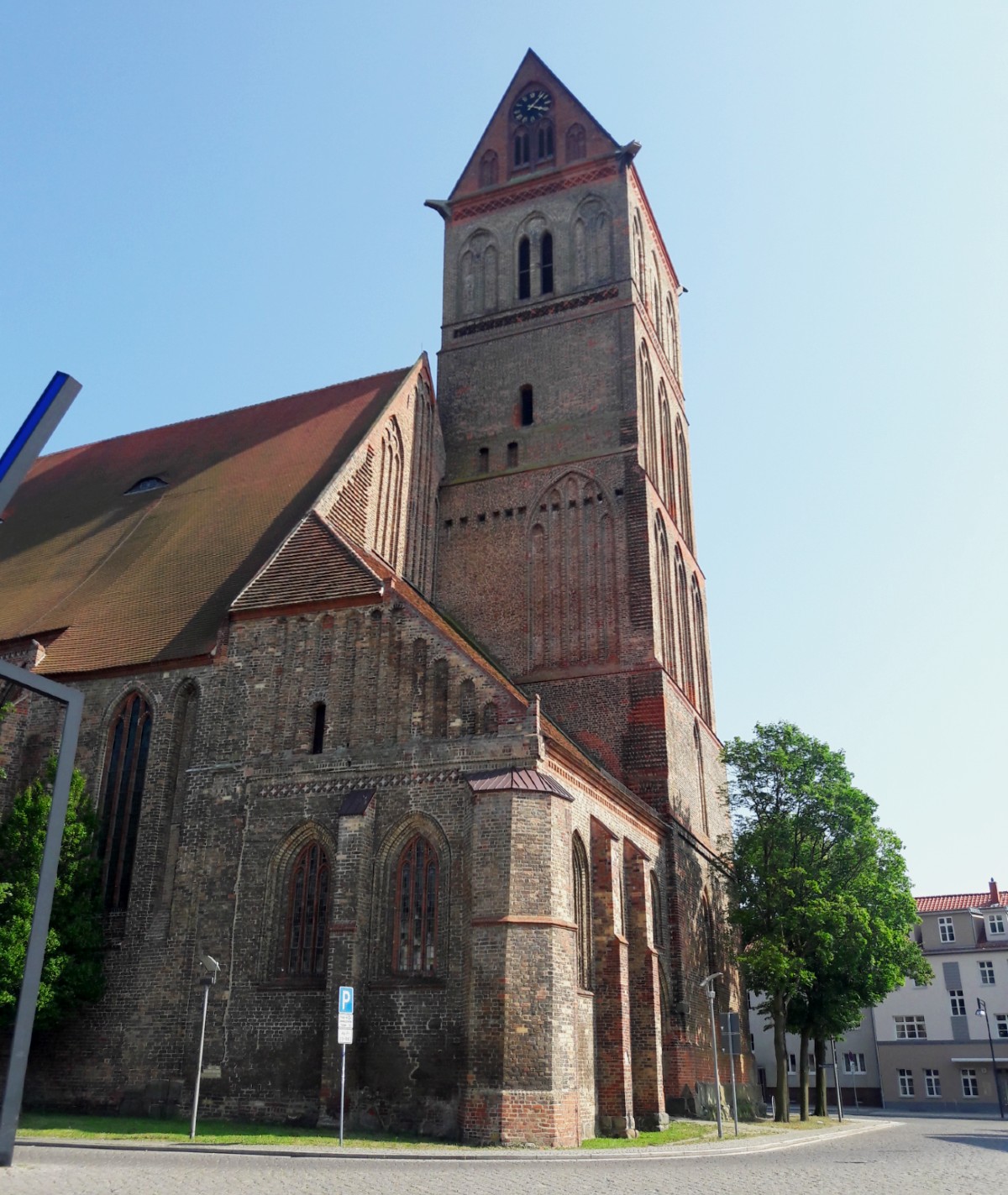
Anklam is the name of one of the smaller North German Hanseatic cities. It is a small town with an exciting history and fine sights, which can be seen on some lovely walks in the town centre. The best place to start is the main square Markt.
There are some large churches and fine houses in the city streets. The modern history goes back to the 13th century, when trade flourished in the region, and as a visible result, Anklam’s harbor was built. Fish and other goods made the economy grow, and there was corresponding growth in the city.
The town of Demmin is one of Mecklenburg-Western Pomerania’s Hanseatic cities, and there are several sights in the town from its history as a fortified trading post. Today, slightly more than 10,000 inhabitants live in Demmin, where Markt forms the central square and town centre.
The square is the city’s marketplace, and it is a good starting point for a stroll in the city. Take a look at the elegant Town Hall before the walk passes the church of St.-Bartholomaei-Kirche and the maritime environment of the city’s once-bustling river port, which has contributed to a great deal of Demmin’s growth.
Lindenallee 25
lindencenter.de
Gustower Straße 3
real.de
Grünhufer Bogen 11-14
strelapark.de
Ossenreyerstraße, Appolonienmarkt, Mönchstraße, Tribseer Damm
Deutsches Meeresmuseum
Katharinenberg 14-20
meeresmuseum.de
HanseDom
Grünhufer Bogen 18-20
hansedom.de
Ozenaneum
Hafenstraße 11
ozeaneum.de
Stralsund Tierpark
Barther Straße 1
stralsund.de
The history of the Stralsund area date back to the 9th century, when a Slavic settlement was established here. Within the city’s current name it was called Stralow, taken from a Slavic word for arrow. The dominion over the land changed in 1169 with the Danish king Valdemar the Great’s conquest of Rügen.
The development of the present city itself started in 1234, when Rügen’s prince Wizlaw I granted Stralow rights according to role models from Lübeck and Rostock. The city was then colonized by Germans in the otherwise West Slav-influenced area; many came from Westphalia, Lower Saxony and other western German regions.
In 1240, Prince Wizlaw named the city Stralesund, which later became Stralsund, which from the outset quickly developed into a thriving trading town on the Baltic Sea, and in the 1300s it was the leader after Lübeck in the northern German area.
The city center was from the beginning the marketplace, where large buildings saw the light of day; not least Stralsund City Hall and the mighty Saint Nicholas Church. The entire city comprised extensive buildings around the current two marketplaces, and from the end of the 13th century, a city wall encircled Stralsund and defended it against any attackers.
By 1249, however, the competitor Lübeck had attacked and burned Stralsund, which belonged to the Danish krone. The Lübeckers had overcome the Danish king and were thus also able to attack the merchant rise Stralsund.
In 1271 a major fire ravaged Stralsund, and many of the city’s wooden houses went up in flames. Subsequently, many more houses were built in stone. With Stralsund’s natural demarcation of water on all sides, there was plenty of room for development in the first period, and this alone provided further growth. In the 1200-1300s, the economy grew through not least trade, craftsmen and shipbuilding, but also the ever-increasing international trade cooperation.
In 1293, a mutual aid agreement was concluded between Stralsund, Greifswald, Lübeck, Rostock and Wismar. It was the start of the later successful Hanseatic League, where many more cities came into being.
Politically, after the dissolution of the Principality on Rügen with the death of Wizlaw III in 1325, Stralsund came to belong to Pomerania-Wolgast, one of the many historical dukes that this region has seen through time.
On May 24, 1370, the peace in Stralsund was concluded between the Danish king Valdemar Atterdag and the Hanseatic League. The peace ended the second war between Denmark and the Hanseatic cities; a war that had started with Denmark’s conquest of, among other things, the Hanseatic city of Visby on Gotland 1361. The result of the peace agreement was for Stralsund and the other Hanseatic cities that free trade continued to prevail.
After the peace in Stralsund, however, there was no long-term calm in the Baltic Sea area. At the beginning of the 1400s, the Hanseatic League became involved in the battle between Denmark and Holstein, and with Denmark’s introduction of the Øresund customs in the 1420s, taxes came on the trade.
The minor importance of the Hanseatic League from the 1400-1500s also weakened Stralsund’s influence and development. Instead of the lucrative trade, shipbuilding became the livelihood of the city.
During the Thirty Years’ War, from May to August 1628, Stralsund defended itself with the help of Denmark and Sweden against Albrecht von Wallenstein’s imperial troops. After the war, from 1648, Stralsund’s Swedish time followed in the region of Swedish Pomerania.
During the Great Nordic War 1700-1721, Swedish Forpomerania was invaded by Danish, Russian and Saxon troops, and with the siege of the city in 1715 the Swedes surrendered, and the King of Prussia, Friedrich Wilhelm, gave Stralsund to Denmark. With the Peace in Frederiksborg 1720, Stralsund became Swedish again, and this time the Swedish rule lasted until 1815.
At the beginning of the 19th century, Sweden’s King Gustav IV Adolf wanted to integrate Swedish Pomerania into the rest of Sweden, and with a pen stroke, Swedish law came into force from 1 January 1807. However, it was the time when France expanded under Napoleon, and in the summer of the same year came the matches to Stralsund.
The Swedish king was in town, as were the Prussian general Gebhard Leberecht von Blücher and thousands of English soldiers. On 6 August the first French attack came, and fourteen days later Stralsund was French. After the war, at the Vienna Congress on October 23, 1815, Stralsund and Pomerania became Prussian, and from 1818 Stralsund became the regional administrative center.
Throughout the 19th century, shipbuilding and shipping again became the major industry in Stralsund. Several hundred ships were registered in the city and they sailed to ports all over the world. As a result of the maritime school, a navigation school was established in 1854. However, the last decades of the century saw a dramatic decline in newbuilding of ships from the city’s yards.
The industrial era also made its mark on Stralsund, which came on the German rail network in 1863, it was with a side rail for the section between Berlin and Stettin. In 1873, the city’s fortresses were demolished and it brought with it a lot of new construction, and in 1900 the first electric tram line was inaugurated.
During World War II, large parts of Stralsund were destroyed by the Allied bombing of the city on October 6, 1944; among other things, over 35% of the city’s apartments had been hit. On May 1, 1945, Russian troops entered Stralsund, and the area became part of the GDR for the following decades.
During the GDR, Stralsund was greatly expanded with new residential areas, and the economy as a port city again started with a large shipbuilding industry. Politically, a breath from the Swedish past came with the meeting between DDR’s Erich Honecker and Sweden’s Prime Minister, Olof Palme, on June 29, 1984.
Following the German reunification in 1990, Stralsund’s Old Town has undergone a major renovation, and in 2002 UNESCO declared the site of world cultural heritage. Today, new museums have been opened, and Stralsund is the political, economic and tourist center in the northeast corner of Germany.
Overview of Stralsund
Stralsund’s rich history as a thriving Hanseatic city can be seen in many places in the beautiful Old North German town, where merchant buildings are located in the streets between the three large churches and other public buildings erected as symbols of the city’s ability and wealth during the Middle Ages.
The many small streets are evocative as of a bygone era, and one quickly discovers why the city center is on UNESCO’s list of world heritage sites. As you approach Stralsund, you immediately see the city’s great medieval churches; St. Nikolai, St. Marien and St. Nikolai. They are all sights and worth a visit, and in the streets around them it is just about exploring.
About the travel guide to Stralsund
Number of tours: 2 tours in the city + tours in the surrounding areas
Pages: 27
Published: 2019
Author: Stig Albeck
Publisher: Vamados.dk
Language: Danish
ISBN: 978-87-93491-25-0
About the travel guide The travel
guide to Stralsund gives you an overview of the sights and experiences in the German city. Read about top sights and other sights, and buy a travel guide with tour suggestions and descriptions of all the city’s major churches, monuments, mansions, museums, etc.
Stralsund is waiting for you, and at vamados.dk you can also find cheap flights and good deals on hotels for your trip. You just select your travel dates and then you get flight and accommodation suggestions in and around the city.
Read more about Stralsund and Germany
Buy the travel guide
Click the “Put in cart” button to buy the travel guide. You will then be taken to the payment, where you enter the purchase and payment information. After completing the wizard payment, you will immediately receive a receipt with a link to download your purchase. You can download the wizard immediately or use the download link in the email later.
Use the travel guide
When you buy the travel guide to Stralsund, you get the book online so you can have it on your mobile, tablet or computer – and of course you can choose to print it. Use the maps and tour suggestions and you will have a good and content-rich journey.
Old Market Square • Beautiful Churches • City Hall • Ozeaneum • Rügen
Overview of Stralsund
Stralsund’s rich history as a thriving Hanseatic city can be seen in many places in the beautiful Old North German town, where merchant buildings are located in the streets between the three large churches and other public buildings erected as symbols of the city’s ability and wealth during the Middle Ages.
The many small streets are evocative as of a bygone era, and one quickly discovers why the city center is on UNESCO’s list of world heritage sites. As you approach Stralsund, you immediately see the city’s great medieval churches; St. Nikolai, St. Marien and St. Nikolai. They are all sights and worth a visit, and in the streets around them it is just about exploring.
About the travel guide to Stralsund
Number of tours: 2 tours in the city + tours in the surrounding areas
Pages: 27
Published: 2019
Author: Stig Albeck
Publisher: Vamados.dk
Language: Danish
ISBN: 978-87-93491-25-0
About the travel guide The travel
guide to Stralsund gives you an overview of the sights and experiences in the German city. Read about top sights and other sights, and buy a travel guide with tour suggestions and descriptions of all the city’s major churches, monuments, mansions, museums, etc.
Stralsund is waiting for you, and at vamados.dk you can also find cheap flights and good deals on hotels for your trip. You just select your travel dates and then you get flight and accommodation suggestions in and around the city.
Read more about Stralsund and Germany
Buy the travel guide
Click the “Put in cart” button to buy the travel guide. You will then be taken to the payment, where you enter the purchase and payment information. After completing the wizard payment, you will immediately receive a receipt with a link to download your purchase. You can download the wizard immediately or use the download link in the email later.
Use the travel guide
When you buy the travel guide to Stralsund, you get the book online so you can have it on your mobile, tablet or computer – and of course you can choose to print it. Use the maps and tour suggestions and you will have a good and content-rich journey.

Alter Markt is Stralsund’s old market square, and over the centuries it has been the city’s most important square. The city was governed from here, and the first of the major churches in Stralsund was constructed here. Today there is a nice atmosphere among the magnificent buildings around the square.
You can see the Commandantenhaus building at Alter Markt, which the Swedes built in 1748-1751 for their local commander. The most well-known building, however, is Stralsund’s city hall building, which was constructed from around 1250 in typical North German brick Gothic with countless fine details in both the interior and exterior decoration.
Nikolaikirche is the oldest of Stralsund’s three large, old parish churches. It was inaugurated in 1276 and dedicated to Saint Nicholas, who is the patron saint of sailors. The church’s south tower with the spire measures 103 meters. The Baroque top was added in 1667, since a fire had destroyed the Gothic spiers five years earlier.
The church is 87 meters long, and the height of the nave is 29 meters. These are some impressive dimensions that underline the wealth that shipping brought to Stralsund. The altar of the church is worth seeing, and behind the altar you can see Nicolaus Lilienveld’s astronomical clock, which was built in 1394. In the church you will also find the monumental sculpture, Anna Selbdritt.

Kloster St. Johannis is a monastery founded in 1254 by the Franciscans. It was one of the largest buildings of this order of monks along the southern Baltic coast, and it is now one of the oldest preserved buildings in Stralsund.
By far the entire complex is from the foundation. On the other hand, it is characterized by several later constructions that stand out in terms of various styles. Gothic, baroque and classicism are the main architecture for the expansion of the monastic facilities through the years.
After the Reformation, when the monastery was closed down, the buildings were used as poorhouses. Today, the place is used as a venue for concerts, and there are several interesting places to see, such as the baroque library. In 1761, the city was given a collection of books by the Swedish Governor-General Axel von Löwen, and it is kept here.
Like many other towns in the Middle Ages, Stralsund was surrounded by a defensive wall. It measured 3,100 meters and consisted from the 14th century of stone walls and towers. When the Swedes arrived in 1648, they expanded the defenses with bastions.
Today, part of the old wall is both preserved and restored, so it gives a fine impression of the fortifications of the time. Two city gates, Kütertor and Kniepertor, have also been preserved from the time when the city gates were the only access points to the city.

The German Oceanographic Museum is a place where you can explore many aspects of the world’s oceans, e.g. marine biology, research, fishing and environmental and preservation efforts. There is a special exhibition about the animals and plants of the Baltic Sea, and then you can admire the museum’s many aquariums.
German Oceanographic Museum was established in the former monastery of Kloster St. Katharinen in 1951, which was founded by Dominican monks in the 13th century. It is well preserved and stands mainly in the original so-called brick Gothic style.
The former monastery buildings are very beautifully decorated with 15th-century paintings in the Kapitelsaal hall. One of the beautiful buildings is the 70 meter long church. With the Reformation in 1525, the monastery was dissolved and the site taken over by the city government. After the dissolution, the place has been used as a gymnasium and armory to mentioned a few, before it became a museum.
Museumhaus is part of Stralsund’s cultural history museum, which as an institution is called Kulturhistorisches Museum Stralsund. The house dates from the city’s heydays in the 1400s, when buildings were constructed at a fast pace as Stralsund competed with the merchant city of Lübeck.
When you visit the Museumshaus, you enter an experience of the Middle Ages. That era can be explored in the house, which is furnished as an interesting insight and journey into the following centuries of life and development in the city.

Kniepertor is one of the original ten city gates in Stralsund’s historic fortifications which surrounded the city. The gate was inaugurated in 1293 and named after one of the families in town.
The gate is 20 meters high and 11 meters wide, and until the 1960s a tram line ran through the gate. Various buildings up to the gate were demolished in the latter half of the 19th century to make space for the increasing traffic, but the Kniepertor itself was preserved.
Similar to Stralsund Travel Guide